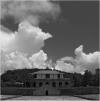Abstract
As consequence of a speedly process of coffee plantation, setting up together with the arriving of the immigration of frenchcolonists from Saint-Dominge during the last decenial of seventeenth century and the begining of nineteenth century, themountainous territory next to Santiago de Cuba brought about some transformations according to the distribution and profit ofthe disposable lands for agricultura. This enterprise, which is a reflect of a weel combined characteristic between nature andculture has been recognized by unesco when was included on the World List of Patrimony as archeological landscape becauseof its excepcional values. The proposal of conservation of patrimonial good start on the point of view considering an strategyof a permanent development of the territory designed through the Integral Plan of Management of archeological landscapecorresponding to the First Coffee Plantations of South-east of Cuba. This will permit a positive economic motivation of activitieswhich have been poorly used or without improving and in this way the people settled on this territory can be included onthe project of natural and cultural patrimony, living to the members of the community an enlargement of the quality of theirspiritual and material life.Apuntes is registered under a Creative Commons Attribution 4.0 International Public License. Thus, this work may be reproduced, distributed, and publicly shared in digital format, as long as the names of the authors and Pontificia Universidad Javeriana are acknowledged. Others are allowed to quote, adapt, transform, auto-archive, republish, and create based on this material, for any purpose (even commercial ones), provided the authorship is duly acknowledged, a link to the original work is provided, and it is specified if changes have been made. Pontificia Universidad Javeriana does not hold the rights of published works and the authors are solely responsible for the contents of their works; they keep the moral, intellectual, privacy, and publicity rights.
Approving the intervention of the work (review, copy-editing, translation, layout) and the following outreach, are granted through an use license and not through an assignment of rights. This means the journal and Pontificia Universidad Javeriana cannot be held responsible for any ethical malpractice by the authors. As a consequence of the protection granted by the use license, the journal is not required to publish recantations or modify information already published, unless the errata stems from the editorial management process. Publishing contents in this journal does not generate royalties for contributors.


